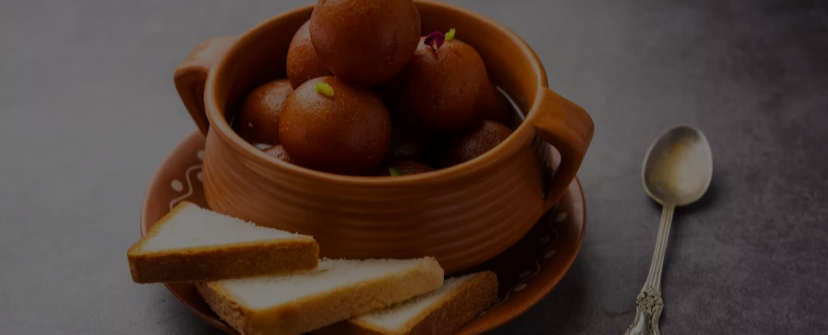
Posted on 5th June 2024
Gulab Jamun: These two words are just enough to transport us back to our childhoods. Imagine being handed a warm katori filled with gulab jamuns and the scent of rose and cardamom syrup wafting from it. Tempting, isn't it? This melt-in-your-mouth dessert brings joy and indulgence in a single bite. Its soft and spongy texture with milky sweetness is the reason most of us wholeheartedly accept gulab jamun and its calories. If you are new to this desert, learn along with the article about its variations. And if you are an everlasting fan of it, gain a new perspective on how this iconic sweet came to be.
You may view Gulab Jamun as a contender for the title of an ideal Indian dessert. It is often pitted against Rasgulla, Jalebi or Halwa for the status of the country’s representative sweet dish. Essentially, gulab jamun is a spherical sweet made from mild solids (khoya) and refined flour. This mix is then deep-fried to a golden-brown hue.
The dessert gains its name from the fact that it does look like a Jamun (black plum). The fried dough ball is then doused in a fragrant simple syrup made with cardamom, saffron, rose water and sugar. While the exterior may get a bit dark, its beauty lies in its soft, succulent insides, which seemingly absorb the simple syrup to perfection.
The masses' eternal love for this dessert has given birth to several variations of this dish. These include Kala Jamun, which is a darker version of gulab jamun, that is fried for a longer time than the former. Other Bengali variations also exist for gulab jamun, namely Pantua and Ledikeni. While Pantua incorporates paneer or chena (fresh curd cheese), the latter follows a similar preparation but is filled with syrup, rather than being submerged in it.
To be truthful, the exact Gulab Jamun origin story seems to be wrapped in the mists of time and word of mouth. However, based on some similarities in the desserts, the historical lineage of Gulab Jamun can be traced back to a Persian dish, luqmat al-qadi. This was a deep-fried dough ball, soaked in rose water syrup. That said, the stark difference between these two is the dough. The Persian recipe uses another variation of the dough, than the ones we use in gulab jamuns today.
Later, our lush dessert also found its place amongst the royal kitchens of the Mughal Empire. Over time, individuals across the country perfected and infused luxurious ingredients like saffron and cardamom into it. Thereby, enhancing the flavour of this dessert and making it the special dish it is today. Such is the history of Gulab Jamun, enjoyed by people from all walks of life.
Desserts are always a question of debate, time and time again. It is always helpful to understand how many calories your favourite sweet contains. That said, the nutritional profile of your dessert and the exact gulab jamun calories may vary. This can be based on several factors, such as its size (and shapes), ingredients and sugar. Hence, 1 gulab jamun calorie may differ from 97 to 175 calories for a single 30 gm piece.
Another alternative to save on gulab jamun calorie intake is by incorporating whole wheat flour like the Copains Superior MP atta. You may also include nuts and seeds in the recipe to boost the nutrients and fibre in the recipe. Try to have a hearty, balanced meal before devouring the gulab jamun; its calories will not be affected, but this practice does get your body ready for any sugar spikes along the way.
From luxurious weddings to celebrating a humble Diwali at home, Gulab Jamun surely rests in the hearts of the masses. On days you crave this dessert and want to save on time, simply make it at home in a few steps with the delicious Gulab Jamun Instant Mix. Each region in the country produces its own spin on the original and manages to add a unique touch to it. It takes effort, rose water and loads of love and sugar to make a bowl of mesmerising gulab jamuns. There is a reason it continues to be a crowd favourite and a regular at the sweet shops.